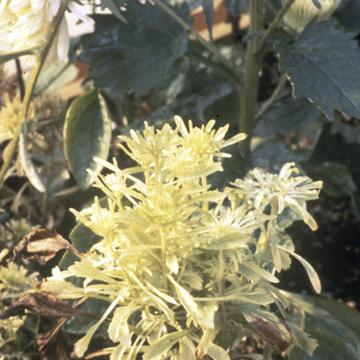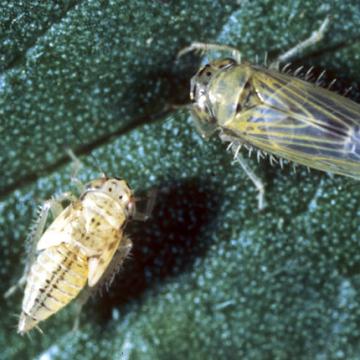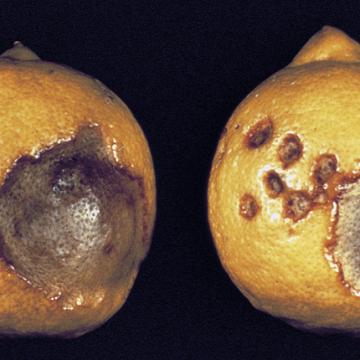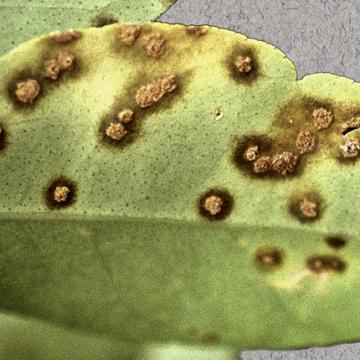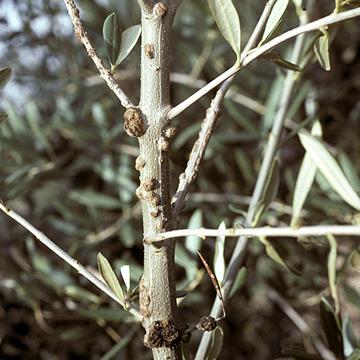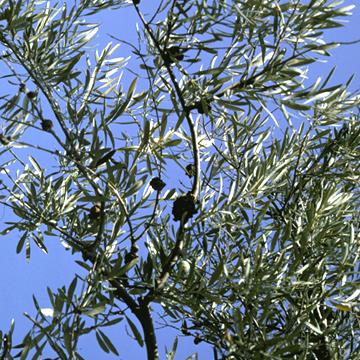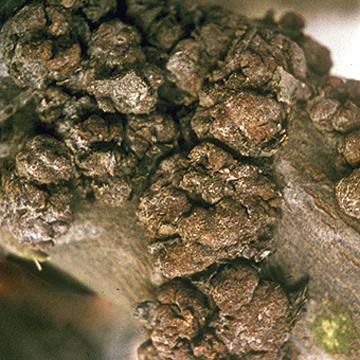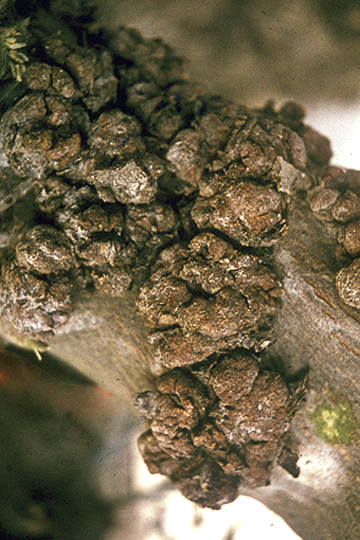DISEASE: Aster yellows
HOST: Aster
Foliar symptoms of chlorosis, malformation of leaves, and phyllody.
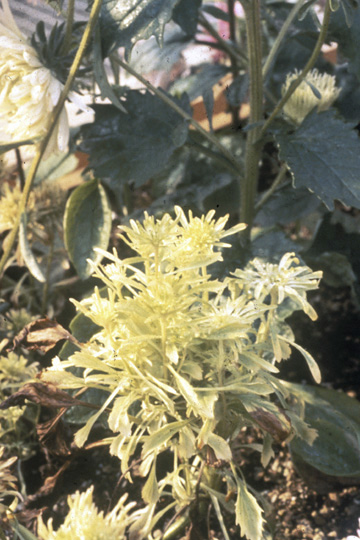
Aster yellows | Aster
DISEASE: Aster yellows
HOST: Aster (Aster sp.)
PATHOGEN: 'Candidatus Phytoplasma asteris'
PATHOGEN SYNONYM: Phytoplasma Aster yellows group
SOURCE: R. McCoy, M. Davis
DISEASE: Aster yellows
HOST: Aster
Flowers with phyllody (left and center). Healthy flower (right).
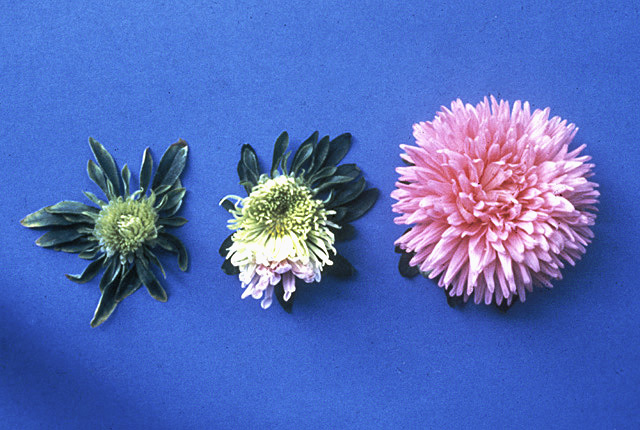
Aster yellows | Aster
DISEASE: Aster yellows
HOST: Aster (Aster sp.)
PATHOGEN: 'Candidatus Phytoplasma asteris'
PATHOGEN SYNONYM: Phytoplasma Aster yellows group
SOURCE: R. McCoy, M. Davis
DISEASE: Aster yellows
HOST: Aster
Macrosteles sp., a leafhopper vector of aster yellows phytoplasma.
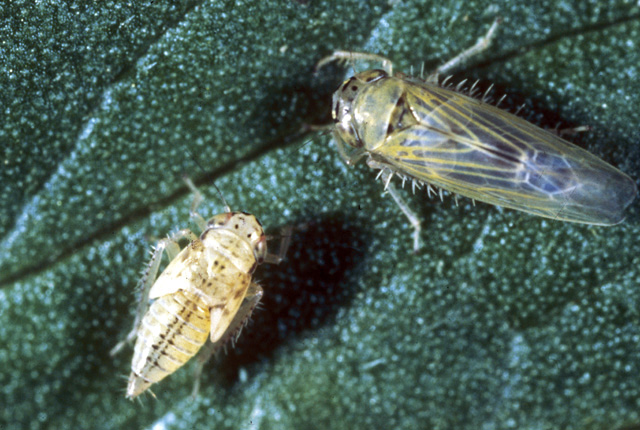
Aster yellows | Aster
DISEASE: Aster yellows
HOST: Aster (Aster sp.)
PATHOGEN: 'Candidatus Phytoplasma asteris'
PATHOGEN SYNONYM: Phytoplasma Aster yellows group
SOURCE: J. Clark, A. Purcell, M. Davis
DISEASE: Bacterial blast and black pit
HOST: Citrus (Lemon)
The term "black pit" refers to black lesions on fruit, which may be specks or large, sunken pits as seen here. They also may be light tan, later becoming reddish brown to black.
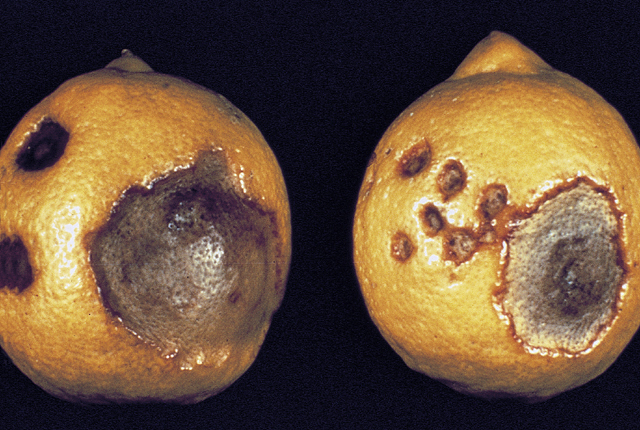
Bacterial blast and black pit | Citrus (Lemon)
DISEASE: Bacterial blast and black pit
HOST: Citrus (Lemon) (Citrus limon)
PATHOGEN: Pseudomonas syringae pv. syringae
SOURCE: J. Menge
DISEASE: Citrus canker
HOST: Citrus (Lemon)
Lower leaf with raised, corkylike lesions surrounded by dark brown halos, one of the diagnostic symptoms of citrus canker.
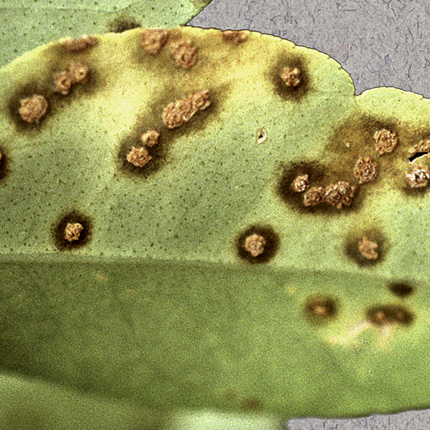
Citrus canker | Citrus (Lemon)
DISEASE: Citrus canker
HOST: Citrus (Lemon) (Citrus limon)
PATHOGEN: Xanthomonas citri subsp. citri
PATHOGEN SYNONYM: Xanthomonas citri
SOURCE: T. Gottwald
DISEASE: Olive knot
HOST: Olive
Multiple infections of young stems. The bacterium invades vascular tissues during certain times of the year and may be isolated from branches that appear healthy.
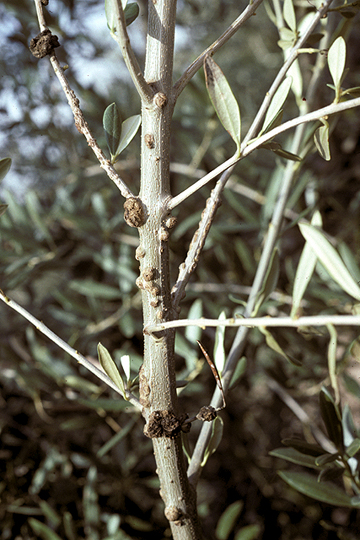
Olive knot | Olive
DISEASE: Olive knot
HOST: Olive (Olea europaea)
PATHOGEN: Pseudomonas savastanoi pv. savastanoi
SOURCE: M. Schroth
DISEASE: Olive knot
HOST: Olive
Tree with knots/galls on branches along with twig dieback, which is associated with knots. Fusarium and Diplodia spp. infect through knots and are thought to be main reason for dieback.
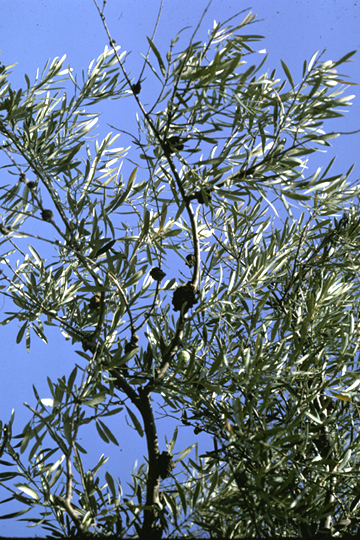
Olive knot | Olive
DISEASE: Olive knot
HOST: Olive (Olea europaea)
PATHOGEN: Pseudomonas savastanoi pv. savastanoi
SOURCE: M. Schroth


